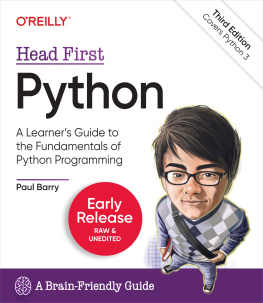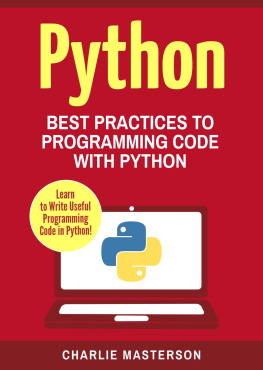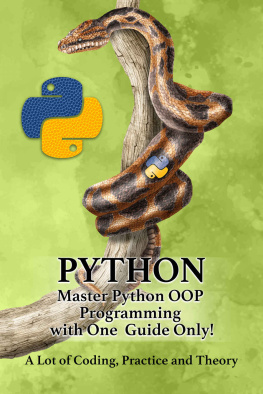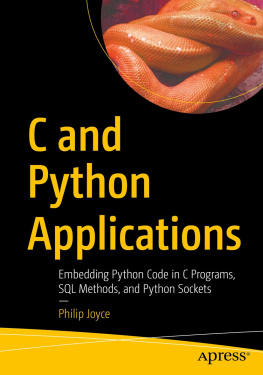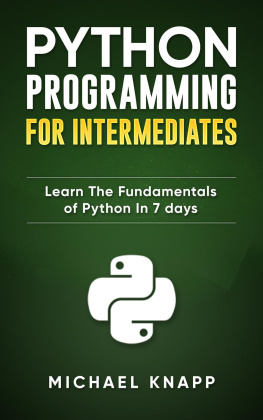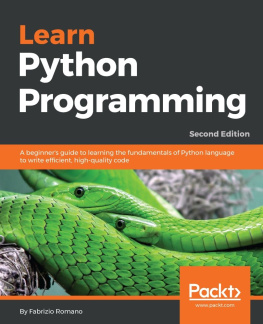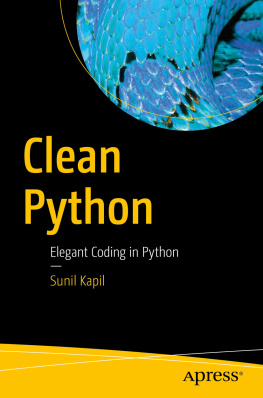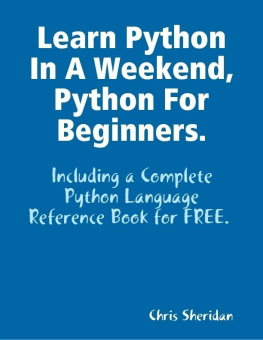Paul Gerrard [Paul Gerrard] - Lean Python: Learn Just Enough Python to Build Useful Tools
Here you can read online Paul Gerrard [Paul Gerrard] - Lean Python: Learn Just Enough Python to Build Useful Tools full text of the book (entire story) in english for free. Download pdf and epub, get meaning, cover and reviews about this ebook. year: 2016, publisher: Apress, genre: Computer. Description of the work, (preface) as well as reviews are available. Best literature library LitArk.com created for fans of good reading and offers a wide selection of genres:
Romance novel
Science fiction
Adventure
Detective
Science
History
Home and family
Prose
Art
Politics
Computer
Non-fiction
Religion
Business
Children
Humor
Choose a favorite category and find really read worthwhile books. Enjoy immersion in the world of imagination, feel the emotions of the characters or learn something new for yourself, make an fascinating discovery.
- Book:Lean Python: Learn Just Enough Python to Build Useful Tools
- Author:
- Publisher:Apress
- Genre:
- Year:2016
- Rating:4 / 5
- Favourites:Add to favourites
- Your mark:
Lean Python: Learn Just Enough Python to Build Useful Tools: summary, description and annotation
We offer to read an annotation, description, summary or preface (depends on what the author of the book "Lean Python: Learn Just Enough Python to Build Useful Tools" wrote himself). If you haven't found the necessary information about the book — write in the comments, we will try to find it.
Learn only the essential aspects of Python without cluttering up your mind with features you may never use. This compact book is not a best way to write code type of book; rather, the author goes over his most-used functions, which are all you need to know as a beginner and some way beyond.
Lean Python takes 58 Python methods and functions and whittles them down to 15: as author Paul Gerrard says, I havent found a need for the rest.
What Youll Learn
- Discover lean Python and how to learn just enough to build useful tools
- Use Python objects, program structure, I/O, modules and more
- Handle errors and exceptions
- Test your code
- Access the Web; do searching; and persist data
Who This Book Is For
This book is aimed at three categories of reader: The experienced programmer if you already know a programming language, this book gives you a shortcut to understanding the Python language and some of its design philosophy.
You work in IT and need a programming primer you might be a tester who needs to have more informed technical discussions with programmers. Working through the examples will help you to appreciate the challenge of good programming.
First-timer you want a first book on programming that you can assimilate quickly to help you decide whether programming is for you.
Paul Gerrard [Paul Gerrard]: author's other books
Who wrote Lean Python: Learn Just Enough Python to Build Useful Tools? Find out the surname, the name of the author of the book and a list of all author's works by series.

![Paul Gerrard [Paul Gerrard] Lean Python: Learn Just Enough Python to Build Useful Tools](/uploads/posts/book/124061/thumbs/paul-gerrard-paul-gerrard-lean-python-learn.jpg)
